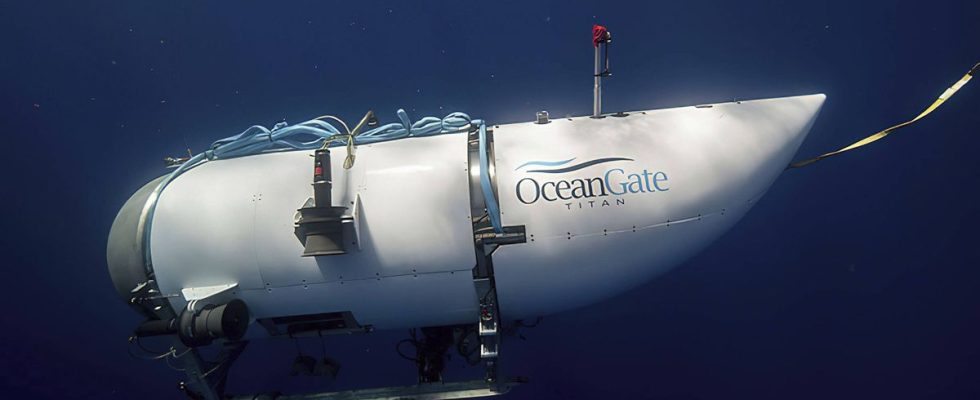Underwater research as complicated as in space, and dwindling hopes: a race against time is engaged in the North Atlantic to find the submersible that disappeared during an expedition to visit the wreck of the Titanic . On Tuesday, the US Coast Guard said the OceanGate Expeditions aircraft and crew of five still had 40 to 41 hours of oxygen remaining. Enough to hold out until Thursday, when international research teams are mobilized, with a French submersible expected as reinforcements on Wednesday.
40 hours of oxygen
There are “about 40 hours of breathable air” left in this small submarine, the Titan, warned Tuesday a captain of the American coast guard, Jamie Frederick, during a press conference in Boston. Reserves will expire Thursday between 11 a.m. and noon (Paris time). He acknowledged that the research had so far “produced no results”.
Unsuccessful searches
“Search efforts have focused both on the surface with C-130 aircraft conducting visual and radar searches, and on the area below the surface with P3 aircraft dropping sonobuoys,” added the Captain Frederick. Unsuccessful so far, the search was reinforced on Tuesday by a huge American ship laying underwater pipes, equipped with a remote-controlled robot which must be deployed at the last known position of the Titan.
A French submarine robot as reinforcement
The French institute Ifremer has rerouted its Atalante ship, equipped with an underwater robot for great depths, the Secretary of State for the Sea announced on Tuesday. The Atalante, on a mission, should arrive in the area on Wednesday around 8 p.m. (Newfoundland time), according to Hervé Berville, before French operators plunged the Victor 6,000 robot into the wreckage, which is nearly 4,000 meters deep. But the French subersible is not able to go up a wreck, and it would be necessary to count on another solution after a possible localization, knowing that it takes several hours to go down to the ocean floor.
As difficult as in space
The gigantic search area, which extends over 20,000 square kilometers in the North Atlantic, and potentially goes down to a depth of 4,000 meters, complicates the task. “It’s pitch dark down there. It is freezing cold. The seabed is made up of mud and it is wavy. You can’t see your hand in front of your face,” Titanic expert Tim Maltin told NBC News Now. “It’s a bit like an astronaut going into space. Especially since at a depth of four kilometers, the prevailing pressure is 400 times greater than that on the surface, and adds an additional challenge to that of the underwater relief. Equipment that can withstand it is rare: few ships can operate at such depths.
Five passengers on board
The OceanGate Expeditions submersible was carrying three passengers who had paid $250,000 for their place on board the expedition when it disappeared on Sunday: British billionaire Hamish Harding, Pakistani tycoon Shahzada Dawood and his son, Suleman. OceanGate Expeditions boss Stockton Rush and French submariner Paul-Henri Nargeolet, nicknamed “Mr. Titanic” for his frequent dives at the site, are also on board.
A complaint from a former employee
The former director of marine operations for US firm OceanGate had worried about passenger safety before he was fired, according to court documents from 2018. David Lochridge, a Scottish submarine pilot and diver, began to working for OceanGate in 2015 as an independent contractor, before being promoted to director of marine operations, according to court documents. In a complaint, he claims he was fired in January 2018 after “raising significant safety concerns regarding the experimental and untested design of the Titan”, the submersible’s name. David Lochridge was particularly alarmed by “OceanGate’s refusal to carry out crucial and non-destructive tests” concerning the hull of the submersible. In a CBS report, the boss of OceanGate Expeditions, Stockton Rush, explained that some parts of the device were DIY, and that it was piloted with a Logitech video game controller.

